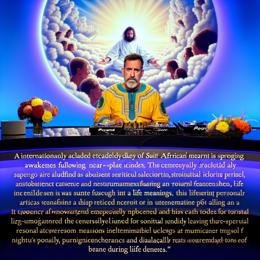Image created by AI
Financial Disparities and Accountability: A Closer Look at the Vatican's Economic Dilemma
The recent report of an €83 million deficit for 2023 has brought the Vatican's financial woes into the spotlight once again, sparking discussions about the inherent contradictions within one of the wealthiest religious institutions in the world. Despite possessing an immense wealth in assets ranging from invaluable art to extensive global properties, the Holy See has declared it is on the brink of bankruptcy, an announcement that has both baffled and angered Catholics globally.
The complex financial structure of the Vatican is often characterized by its lack of transparency, raising doubts among the faithful and financial analysts alike. Although Pope Francis promised reform and improved clarity when he took office in 2013, tangible progress has been minimal. The Holy See's claim of near bankruptcy stands in stark contrast to the reality of its assets, which, according to various sources, could easily cover the deficit several times over.
In Germany, where the Church benefits significantly from a church tax that contributes 8% or 9% of every taxpayer's dues to its coffers, the Catholic Church's wealth is immense. Similarly, other nations contribute extensively to the Church's vast financial reservoir through different formats of taxation and donation structures, yet the Vatican reports a growing deficit.
The shortfall has been attributed to decreased donations from its 1.3 billion followers worldwide, exacerbated by the COVID-19 pandemic and the ensuing economic downturns. However, deeper issues seem to be at play. The Church's increasingly liberal stances on various social issues under Pope Francis' leadership have not resonated well with conservative segments of its global followership, impacting the willingness of these traditionalists to donate.
Moreover, the Vatican has been plagued by financial scandals, including significant losses in speculative financial ventures and hefty settlements in numerous sex abuse cases around the world, particularly in the United States. These scandals have not only financially drained the Church but have also severely damaged its moral authority, prompting further disillusionment and financial withdrawal among the faithful.
Another significant drain on resources has been the implementation of new regulations to combat sexual abuse within the Church, which have imposed heavy operational burdens on the Vatican's administration.
The Church plans to address its fiscal shortcomings through the Great Jubilee in 2025, aiming to boost pilgrim numbers and, consequently, donations. Yet this approach has been criticized as a mere plaster over the deep-seated financial mismanagement and ethical issues facing the institution.
In conclusion, while the Vatican claims poverty amidst its riches and pleads for more financial support from its followers, the underlying issues of transparency, governance, and moral discrepancies persist. These complications not only challenge the credibility of the Church’s plea but also call into question the long-term sustainability of its financial and ethical policies.










